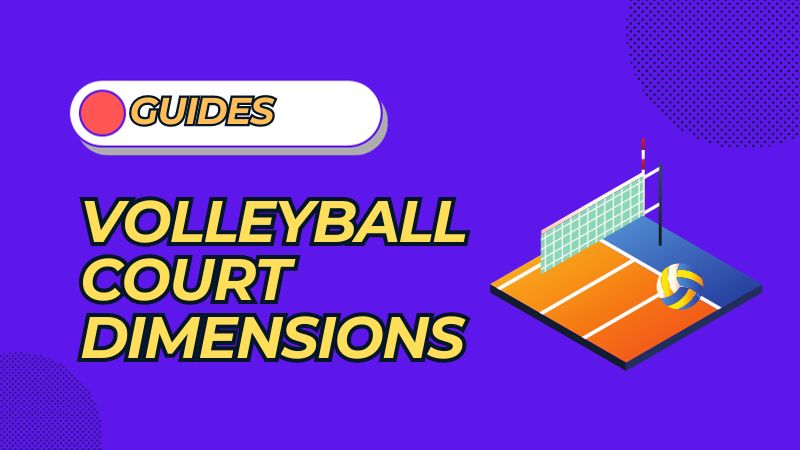Volleyball, an energetic team sport, has captivated players, coaches, and fans like myself for decades. Its fast-paced action offers an exhilarating experience, marked by thrilling rallies and dynamic team interplay. What I love about volleyball is that courts have unique dimensions that are crucial to the game’s nature.
Understanding these dimensions is not just a matter of measurement; it’s about grasping the essence of the sport. This understanding promotes both playing and viewing experiences, providing insights into the strategic and physical demands of volleyball.
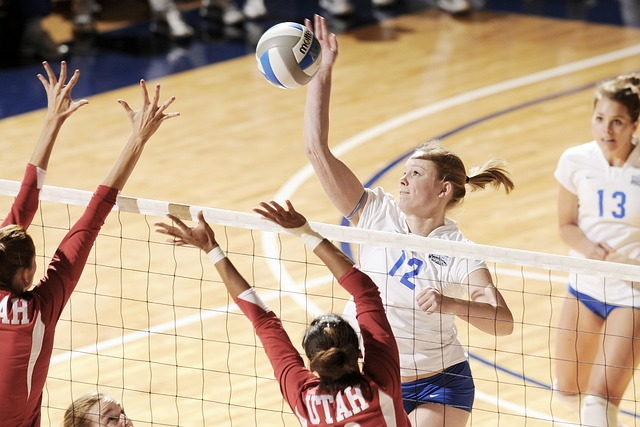
Volleyball Court Dimensions
The standard volleyball court is a rectangle measuring 18 meters (59 feet) in length and 9 meters (29.5 feet) in width, providing a spacious area for dynamic play. This area is evenly divided into two halves, each measuring 9 meters by 9 meters, separated by the net.
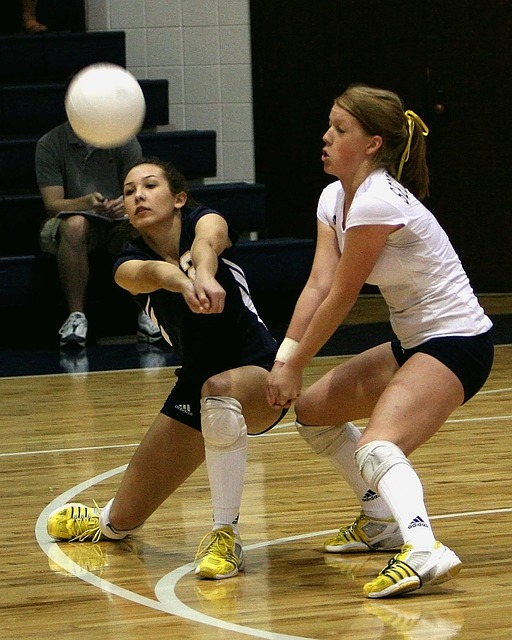
The clearance height — especially crucial in indoor volleyball — is set at a minimum of 7 meters, ensuring unobstructed play. This height is essential to allow for the high arcs often seen in volleyball serves and spikes.
Net Height and Placement
A key feature of the court is the volleyball net heights which defines the playing space. For men’s competitions, the net height is set at 2.43 meters (7 feet 11 5/8 inches) above the center of the court. In women’s competition, the height is slightly lower, at 2.24 meters (7 feet 4 1/8 inches).
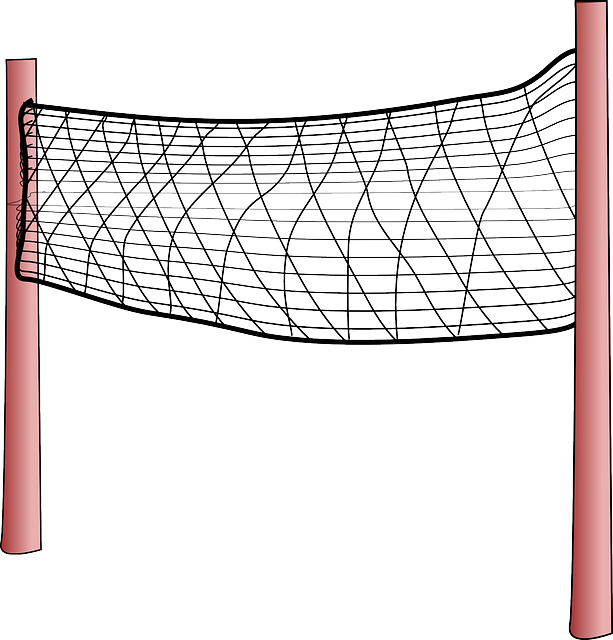
Volleyball net height can vary in different categories such as veterans’ and junior competitions, accommodating different player needs. Proper net placement and stability are crucial for a fair and safe game.
Boundary Lines and Markings
The boundary lines of a volleyball court include the end lines and sidelines, which define the court’s perimeter. The center line divides the court into two halves, and the attack lines, positioned 3 meters from the net in each half, delineate the front zone.
These lines are not just physical demarcations but also serve as crucial guides for gameplay, indicating where players can serve, spike, and position themselves during a match.
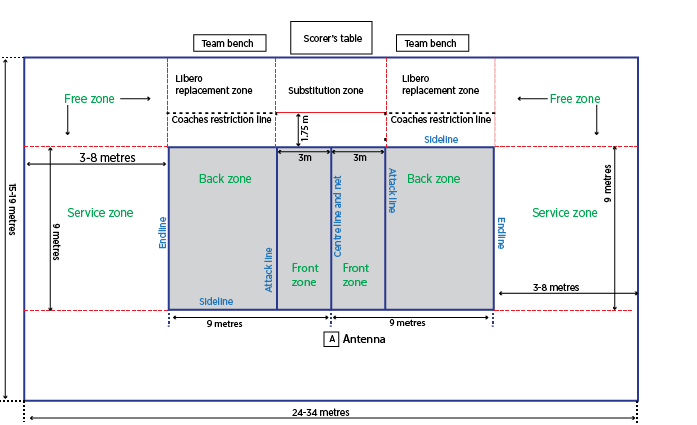
The free zone around the court, extending 3 meters from all sides, is vital for player movement, allowing athletes to make plays on the ball outside the court’s boundary markings. This area is particularly important for high-level play, where players often dive or jump beyond the court lines to keep the ball in play.
Types of Volleyball Courts
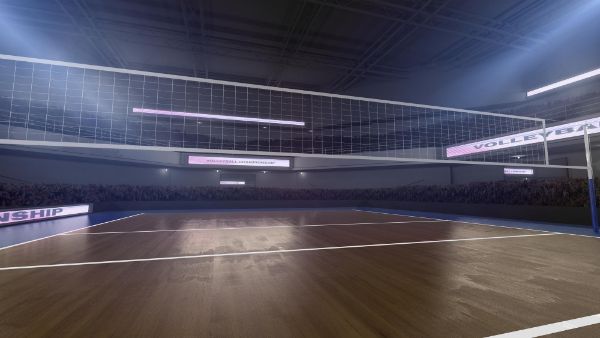
I love volleyball because it is a sport that can be enjoyed in various settings, and the type of court plays a significant role in the game’s dynamics. Whether it’s for professional games, youth volleyball, or recreational play, different court types offer unique benefits. Let’s explore the three primary types of volleyball courts:
Hardwood Volleyball Courts
Hardwood courts are a staple in indoor volleyball. They are often found in professional games and are the standard for official competitions, including those governed by USA Volleyball and international governing bodies. These courts are made of high-quality wood, offering excellent traction and a consistent ball bounce, which is crucial for player safety and performance.
Hardwood courts are commonly used in middle schools, high schools, and collegiate-level games. Their surface allows for precise movements and is preferred for its traditional and professional feel.
Synthetic Volleyball Courts
Moving outdoors, synthetic volleyball courts are designed for durability and stability, suitable for various weather conditions. This makes them ideal for beach volleyball courts, where exposure to elements like sun and sand is a daily affair.
These outdoor courts, often seen adjacent to beach areas or outdoor recreational facilities, offer a stable playing surface. They are also easier to maintain compared to natural sand courts, ensuring a consistent playing experience.
Tile Volleyball Courts
Court tile volleyball courts bring versatility to the game. Constructed from modular tiles, these courts can be used both indoors and outdoors, making them popular in competitive arenas and recreational centers. The modular nature allows for easy assembly and disassembly, providing flexibility and easy access to various events.
This type of court is especially useful in settings where the court needs to be set up temporarily or in multi-purpose venues.
In each type of volleyball court, specific dimensions and line markings, such as the service line, center line, and end line, are essential for proper gameplay. For example, the libero replacement zone and substitution zone must be marked in competitive play.
The ceiling height in indoor courts must be high enough to ensure unobstructed play, an important aspect of indoor volleyball court design.
Volleyball Court Zones
In volleyball, the court is not just a playing field; it’s a strategic layout divided into specific zones, each with its unique role in the game. Comprehending these zones is crucial for players to effectively position themselves and execute game plans.
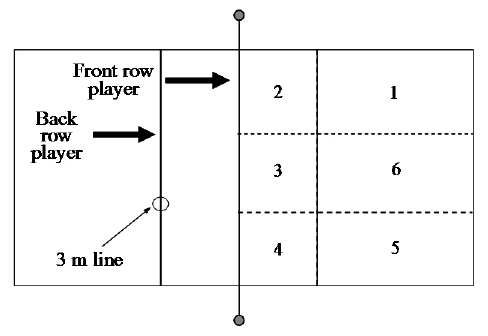
One of the key zones is the service zone. Located at the back of the court, behind the end line, it is where players serve the ball. This zone stretches across the entire width of the court, offering players a range of angles for their serves. The service zone is crucial as the serve sets the tone for each rally, and effective serving can significantly impact the game’s flow.
Another important aspect is the antenna placement. These antennas, extending vertically from both sides of the net, mark the lateral boundaries within which the ball must pass during play.
The position of these antennas directly influences the angles players can use, especially when attacking or blocking, making them vital for strategic plays around the net.
The court is also informally divided into different rows: the front row and the back row, separated by the attack line. The front row, closer to the net, is primarily focused on attacking and blocking. Meanwhile, the back row is more involved in defensive actions like receiving serves and setting up offensive plays.
This informal division underlines the importance of positioning, as back-row players are restricted from attacking the ball above the net height if they are in front of the attack line.
The boundary lines, including the end lines and sidelines, are critical in defining the playing area. These lines determine if the ball is in play, and players must be constantly aware of them to keep the ball within bounds.
The center line under the net is also significant, as it demarcates the team’s playing areas, and players must avoid crossing it to prevent faults and maintain safety during play.
Conclusion
The dimensions of a volleyball court, meticulously crafted by international governing bodies, are fundamental to the game’s structure and play a pivotal role in shaping its dynamics. Understanding these dimensions, along with the comprehensive rules that govern the sport, is essential for any player or enthusiast looking to improve their gameplay.

By delving deeper into the intricacies of court dynamics and rule specifics, players can develop a more nuanced approach to volleyball. Check out Volleyball Victories to further explore and enhance your skills with our array of tips and tricks, helping you elevate your game to new heights.
FAQs
What is the dimensions of a sitting volleyball court?
A sitting volleyball court measures 10 meters in length and 6 meters in width, inclusive of boundary markings. It’s bisected into equal halves, each 5 meters by 6 meters, by a centerline. The height of the net is set at 1.15 meters for men’s competitions and 1 meter for women’s, catering to the specific requirements of the sitting volleyball variation.
What is the length and breadth of a volleyball court?
The standard dimensions of a volleyball court are 18 meters in length and 9 meters in width. This volleyball court size is universally adopted for both indoor and beach volleyball games. The rectangular court is demarcated by boundary lines, ensuring precise and standardized play areas for volleyball matches at all levels of competition.
Who created volleyball?
Volleyball was created by William George Morgan in 1895. Born in Lockport, New York, Morgan initially named the sport “Mintonette.” He developed this game while working as a physical education director at the YMCA in Holyoke, Massachusetts. The name was later changed to volleyball, reflecting the game’s primary objective of volleying the ball back and forth over a net.

